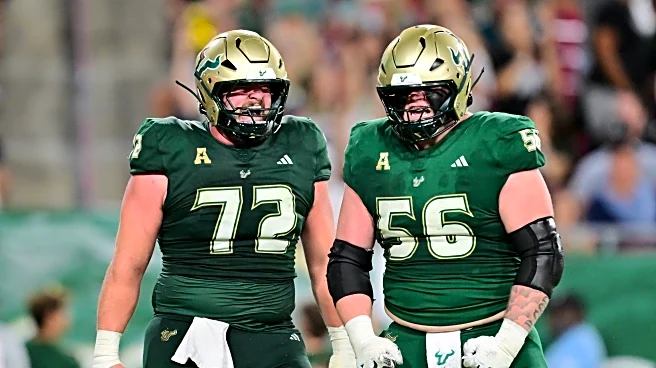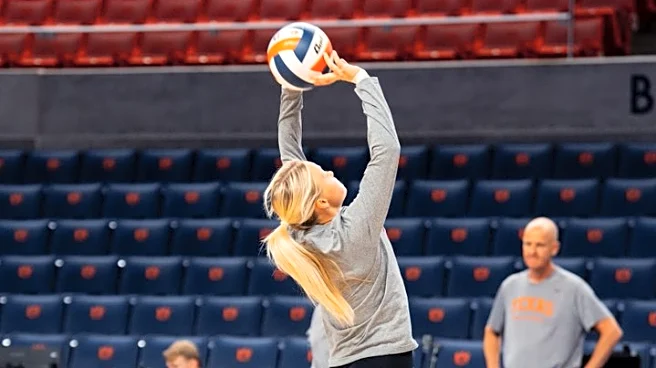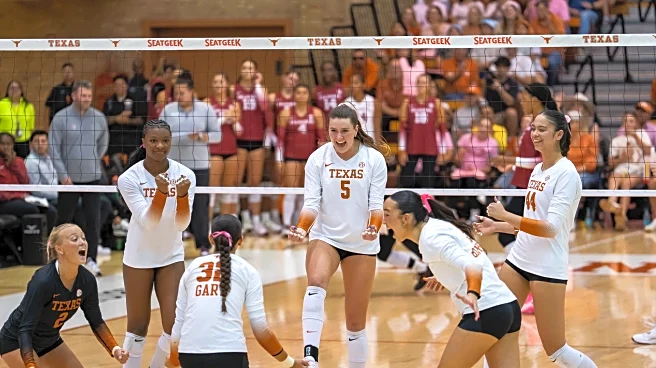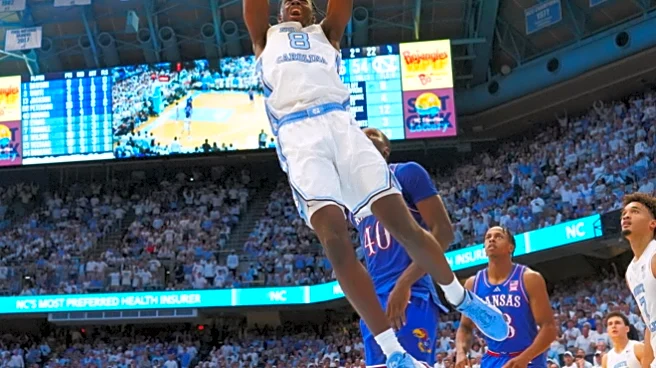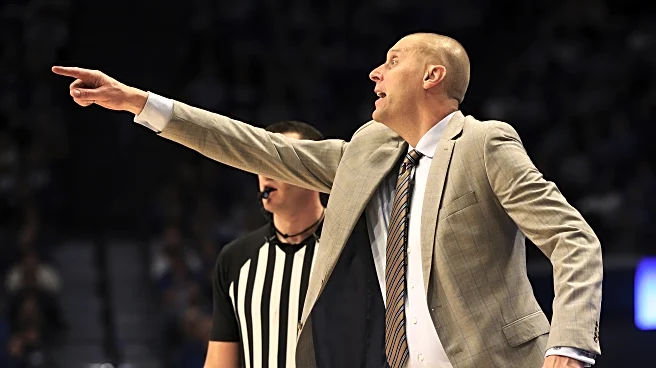What's Happening?
The NCAA women's college volleyball season is nearing its conclusion, with the selection committee set to reveal the field of 64 teams on November 30. The tournament will feature 31 automatic bids and
33 at-large teams, with the top eight teams in each region seeded. Nebraska, Kentucky, Texas, and Pittsburgh currently hold the No. 1 seeds, maintaining strong performances in their respective conferences. Nebraska faces a challenging schedule with upcoming matches against USC and UCLA, while Pittsburgh will compete against Stanford, a No. 2 seed, in a crucial matchup. The tournament's Final Four is scheduled to take place in Kansas City, Missouri, on December 18, with the finals on December 21.
Why It's Important?
The NCAA volleyball tournament is a significant event in college sports, showcasing top talent and providing opportunities for teams to compete on a national stage. The selection process and seedings are crucial as they determine the path teams must take to reach the finals. For schools like Nebraska and Pittsburgh, maintaining their top seed status is vital for hosting advantages in the early rounds. The tournament also impacts conference standings and can influence recruitment and funding for college volleyball programs. Teams on the bubble, such as Georgia Tech, face pressure to secure wins against strong opponents to ensure their place in the tournament.
What's Next?
As the season concludes, teams will focus on securing their positions in the tournament through remaining matches. Georgia Tech, currently on the bubble, must perform well against top teams like Louisville and Stanford to solidify their spot. The selection committee will finalize the bracket, considering both automatic bids and at-large selections based on team performance and strength of schedule. The upcoming matches will be critical in shaping the final seedings and determining which teams will host the initial rounds of the tournament.
Beyond the Headlines
The tournament's structure, with regional hosting and seedings, highlights the NCAA's efforts to balance competitive fairness and geographical considerations. The event also underscores the growing popularity and investment in women's college sports, reflecting broader societal shifts towards gender equality in athletics. The competitive nature of the selection process can lead to intense scrutiny and debate over the criteria used, impacting perceptions of fairness and transparency in college sports governance.








